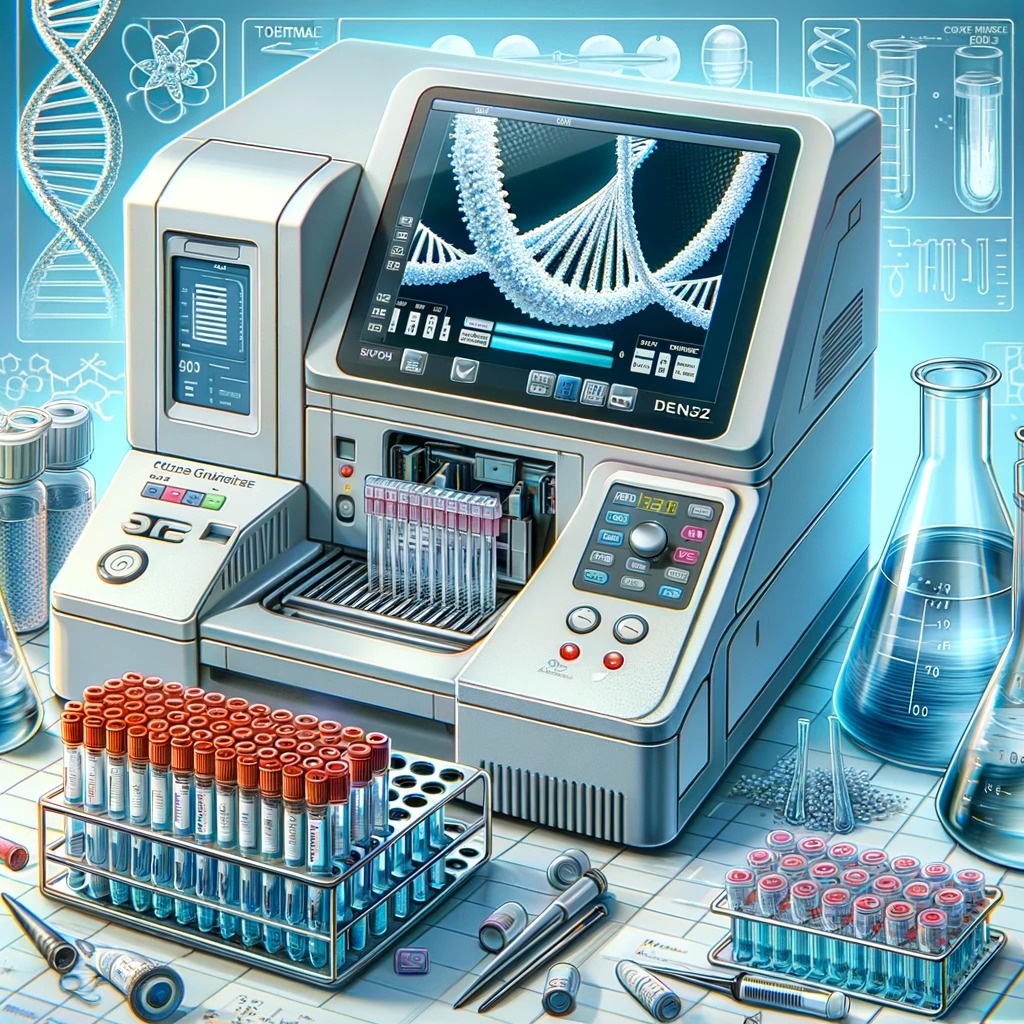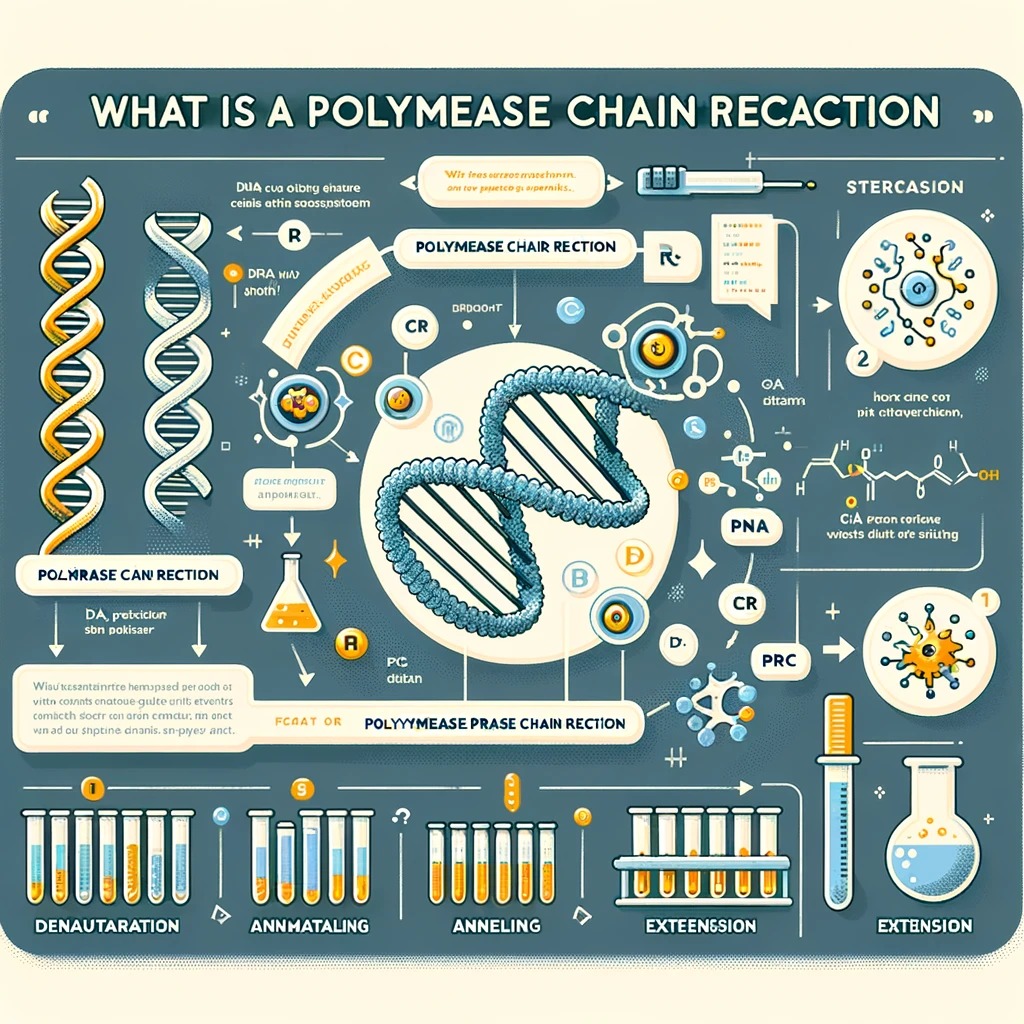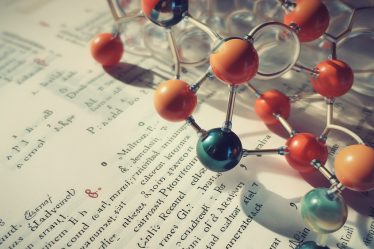
Have you ever wondered how scientists can detect and analyze tiny amounts of DNA from different sources, such as bacteria, viruses, fossils, or crime scenes? How can they make millions or billions of copies of a specific DNA segment in hours? The answer is a technique called polymerase chain reaction (PCR), which is one of the most important and widely used tools in modern biology, biochemistry, and medicine.
In this blog post, we will explore the different types of PCR and their applications, the challenges and limitations of PCR and how to overcome them, and the significance and impact of PCR as a powerful and versatile DNA amplification and analysis technique. We will also provide study tips and resources for students who want to learn more about PCR and related topics, such as DNA fingerprinting, gene editing, or synthetic biology.
Suppose you want to learn more about chemistry and biology subjects and concepts. In that case, you can also check out tutoring services, where you can find qualified and experienced tutors to help you achieve your academic goals.
Are you interested in other subjects? Read top free study guides for Biology, English, French, and Music.
Here’s a Glimpse of What You’ll Learn About Polymerase Chain Reaction
- Basics of Polymerase Chain Reaction: What is a polymerase chain reaction and its role in science?
- Steps in a PCR Reaction: The process of how polymerase chain reaction works.
- Different PCR Techniques: Overview of real-time PCR, nested PCR, and reverse transcription polymerase chain reaction.
- Applications of PCR: Uses of polymerase chain reaction in diagnostics, research, and DNA fingerprinting.
- Challenges with PCR: Common problems in PCR reactions and solutions.
- Impact of PCR: How polymerase chain reaction is used in various fields and its connection to DNA fingerprinting.
What is a Polymerase Chain Reaction, and How Does It Work?
Polymerase Chain Reaction (PCR) is a powerful technology in molecular biology that amplifies small segments of DNA. This means it can take a tiny piece of DNA and make millions of copies. This is extremely useful in various scientific and medical applications.
The Principle of PCR and the Role of DNA Polymerase, Primers, and Nucleotides
PCR relies on a few key components: DNA polymerase, primers, and nucleotides. DNA polymerase is an enzyme that reads the DNA strand and helps to build a new strand by adding nucleotides, which are the building blocks of DNA. Primers are short DNA sequences that provide a starting point for DNA synthesis. They attach to specific regions on the DNA strand to be copied. For PCR, you also need ATP. By combining these elements, PCR can selectively amplify a particular segment of DNA from a complex DNA mixture.
The Three Main Stages of PCR: Denaturation, Annealing, and Extension
PCR involves three main steps. The first is denaturation, where the double-stranded DNA is heated to separate into two single strands. The second step is annealing, where the temperature is lowered to allow the primers to bind to their complementary DNA sequences. The third step is extension, where the DNA polymerase extends the primers to form a new strand of DNA. These steps are repeated many times to amplify the DNA segment.
Examples of PCR Applications in Different Fields
PCR has a wide range of applications. Medicine uses it for diagnosing diseases, including detecting pathogens like viruses and bacteria. Scientists use PCR for gene cloning, sequencing, and analysis in research. Forensic science uses PCR for DNA fingerprinting in criminal investigations. In agriculture, PCR assists in genetically modifying crops and diagnosing plant diseases. This wide array of applications shows how versatile and essential PCR is in modern science and technology. For a better understanding, see this video:
The basics of organic and inorganic chemistry.
What are the Different Types of PCR and What are Their Applications?
Polymerase Chain Reaction (PCR) is a versatile tool in molecular biology. Over time, various types have been developed to improve sensitivity, specificity, speed, and the ability to handle multiple targets (multiplexing). Here’s an overview of some key types of PCR, their unique features, and applications.
Real-time PCR: Precision in Quantification
Real-time PCR, also known as quantitative PCR (qPCR), is an advanced form of PCR that enables the monitoring of DNA amplification in real time. It uses a fluorescent reporter, which increases fluorescence as the DNA amount increases. This technique is incredibly useful in quantifying a sample’s DNA amount.
Applications of real-time PCR
Real-time PCR is widely used in medical diagnostics, particularly in infectious disease testing, where it’s essential to quantify pathogen load. It’s also used in gene expression analysis in research.
Nested PCR: Enhanced Specificity
Nested PCR is a modification where two sets of primers are used in two successive PCR reactions. The second set of primers is designed to anneal within the first PCR product, significantly increasing the specificity and reducing background noise.
Applications of Nested PCR
This technique is handy in detecting low-abundance targets, such as bacterial or viral DNA in clinical samples. It’s also applied when high specificity is critical, like in sensitive genetic mutation analysis.
Multiplex PCR: Amplifying Multiple Targets
Multiplex PCR allows for the simultaneous amplification of multiple targets in a single PCR reaction using multiple primers. This ability to handle multiple targets in one go saves time and resources.
Applications of Multiplex PCR:
It finds extensive use in genetic testing, where multiple genes may need to be analyzed simultaneously, such as in hereditary disease screening. In forensics, it’s used for DNA profiling, where several loci are amplified simultaneously.
Reverse Transcription PCR: From RNA to DNA
Reverse transcription PCR (RT-PCR) involves converting RNA into DNA using an enzyme called reverse transcriptase. PCR then follows this. This method is essential when the starting material is RNA.
Applications of Reverse Transcription PCR
RT-PCR is fundamental in studying gene expression and viral RNA, including diagnosing RNA viruses like HIV and SARS-CoV-2 (the virus causing COVID-19).
PCR reaction: Comparison Table of PCR Types
|
Type of PCR |
Advantages |
Disadvantages |
Applications |
|
Real-time PCR |
Quantitative data, real-time monitoring |
Requires specialized equipment |
Diagnostics, research |
|
Nested PCR |
High specificity, reduced noise |
Time-consuming, risk of contamination |
Sensitive detection, mutation analysis |
|
Multiplex PCR |
Amplifies multiple targets, efficient |
Requires careful primer design |
Genetic testing, forensics |
|
Reverse Transcription PCR |
Converts RNA to DNA, versatile |
Additional reverse transcription step required |
Gene expression, RNA virus diagnosis |
Each type of PCR has been developed to address specific needs in the laboratory. Whether for diagnosing diseases, conducting research, or forensic investigations, these PCR variations play a crucial role in amplifying and analyzing genetic material. Understanding these types helps select the most appropriate method for a given application, making PCR an indispensable tool in modern molecular biology.
All you need to know about vitamins and minerals.
What are the Challenges and Limitations of PCR and How to Overcome Them?
While Polymerase Chain Reaction (PCR) is a highly powerful and versatile technique in molecular biology, it’s not without its challenges and limitations. These issues can affect the quality and accuracy of PCR results. Understanding these challenges is crucial for obtaining reliable data and effective PCR use in various applications. Common sources of error or contamination in PCR are:
1. Inaccurate or Inadequate DNA Template, Primers, or Polymerase:
- The quality and quantity of the DNA template are critical for successful PCR. Low-quality or insufficient DNA can lead to weak or no amplification. Similarly, primers must be accurately designed to match the target sequence. Incorrect or suboptimal primers can result in non-specific amplification or failed reactions. The quality of DNA polymerase also impacts the PCR’s efficiency.
- Solution: Use high-quality DNA templates and carefully designed primers. Validate primer specificity before use. Ensure the DNA polymerase is good quality and suitable for the specific PCR application.
2. Inappropriate or Variable Reaction Conditions:
- PCR requires precise control of reaction conditions like temperature, pH, and salt concentration. Fluctuations or inaccuracies in these parameters can lead to inefficient or inaccurate amplification.
- Solution: Use precise thermocycling equipment and optimize reaction conditions for each PCR setup. Regular calibration of equipment is essential to maintain accuracy.
3. Presence of Inhibitors or Impurities:
- Samples or reagents contaminated with inhibitors (such as certain chemicals or residual ethanol from DNA purification) can hinder the PCR reaction. Impurities can also come from the laboratory environment or cross-contamination between samples.
- Solution: Ensure clean laboratory practices and use high-quality reagents. Sample preparation should include steps to remove potential inhibitors.
4. Cross-Contamination or Carry-Over Between Samples:
- One of the most common issues in PCR is contamination between samples or from previous PCR products, leading to false positives or mixed DNA profiles.
- Solution: Practice stringent laboratory hygiene. Use separate areas for sample preparation and PCR amplification. Employ techniques like uracil-DNA glycosylase (UDG) to prevent carry-over contamination.
Polymerase Chain Reaction Testing is Revolutionizing Science
In this blog, you’ve learned about the polymerase chain reaction (PCR), an essential technique in molecular biology. PCR is not just a method; it’s a revolution in amplifying and studying DNA. By understanding what PCR is and how it works, you know the steps involved in this process and why it’s so important.
We explored different types of PCR, like real-time PCR and reverse transcription PCR, each tailored for specific needs in DNA analysis. You’ve seen how PCR is crucial in medical diagnostics and research. PCR’s role in DNA fingerprinting also highlights its importance in forensic science.
However, PCR isn’t without challenges. We discussed common issues like contamination and how careful practices can overcome these hurdles. Accurate DNA templates, precise reaction conditions, and avoiding contamination are essential to successful PCR.
For those interested in learning more about PCR or related topics like gene editing or synthetic biology, consider exploring further through private lessons. Tutoring services can be a great resource if you’re a student looking to dive deeper into chemistry or biology. They offer personalized lessons and classes to help you understand complex concepts like PCR.
If you need a chemistry tutor, you can search for “chemistry tutor Liverpool” or “chemistry teacher Edinburgh” on the tutoring platform of your choice, such as meet’n’learn, and find a teacher who suits your requirements.
For those who enjoy learning in groups, you can look for “chemistry classes Leeds” or “chemistry lessons London” on the internet and find out about local schools that offer chemistry lessons.
Understanding PCR opens up a world of possibilities in scientific exploration and discovery. It’s a tool that continues to shape our understanding of life at the molecular level.
Discover how Hydrogen Bonds and Covalent Bonds are formed, and learn to Differentiate Them from Ionic Bonds.
Frequently Asked Questions About Polymerase Chain Reaction
1. What is a Polymerase Chain Reaction?
Polymerase Chain Reaction (PCR) is a method used to amplify small segments of DNA, making millions of copies of a specific DNA sequence.
2. How Does Polymerase Chain Reaction Work?
PCR works by cycling through three key steps – denaturation, annealing, and extension – to exponentially replicate a specific DNA segment.
3. What are the Steps of Polymerase Chain Reaction (PCR) Technique?
The PCR technique involves denaturation (separating DNA strands), annealing (binding of primers), and extension (synthesizing new DNA strands).
4. What is Polymerase Chain Reaction Testing Used For?
PCR testing is used in medical diagnostics, genetic research, forensic science, and studying biological processes.
5. How Does Polymerase Chain Reaction Relate to DNA Fingerprinting?
PCR amplifies specific DNA regions used in DNA fingerprinting to identify individuals or genetic relationships.
6. What is Reverse Transcription Polymerase Chain Reaction?
Reverse Transcription PCR (RT-PCR) converts RNA into DNA using reverse transcriptase before undergoing the PCR process, primarily used for RNA virus detection and gene expression studies.
7. Where Can I Get Help Understanding PCR and Its Applications?
Consider seeking a tutor or enrolling in tutoring sessions to deepen your understanding of PCR. Many educational platforms offer lessons or classes specifically on PCR and its applications. Additionally, private teachers specializing in biology or molecular genetics can provide personalized guidance and support in learning about this complex topic.
Ethanol and Alcohols in chemistry, Fermentation, and how Beer is Made.
References:
1. ThoughtCO
2. NIH
3. Wikipedia



